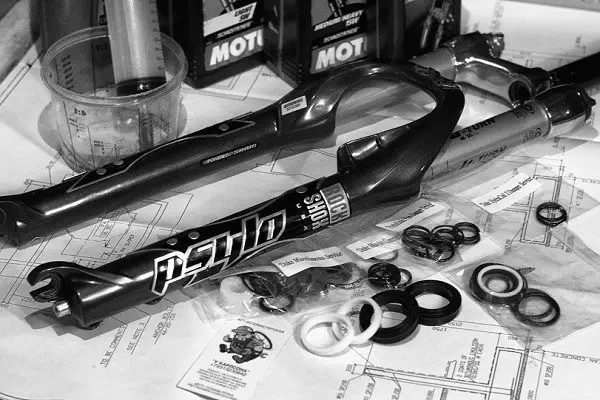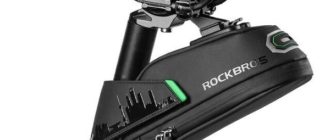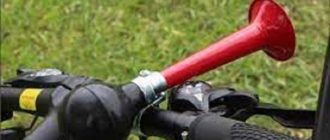The design of bicycles has been changing for more than two hundred years and is still evolving. The fork is an important part of the bike and its invention was a significant milestone in bicycle evolution. The front fork of a bicycle is an integral part of the design. Not long ago, they were all the same. But now it is not just a part of the bike, but a multifunctional mechanism that holds the front wheel, provides a change of direction while riding, absorbs and dampens vibrations on rough roads.
What’s in a bike’s front fork?
Bicycle manufacturers are always looking for new ideas to improve the front fork. The question of choosing this part of the bike becomes a cyclist immediately. A high-end or mid-range fork can cost a third of the cost of a bike. To understand whether an expensive fork is needed or a lower-end fork will suffice, it is worth considering the user’s experience, riding style, purpose and equipment of the bike.
Every cyclist has to face the need to understand the device of his iron horse. Getting to fix the bike, it is important to understand the function of all parts and know their names.
The principle of fork operation is simple. The structure of the front fork is divided into 4 parts:
- Shock absorber – the element that carries the load during the ride. Many models use a spring with different stiffness. The spring stores compression energy from hitting an obstacle. They come in twisted metal and air (a hydraulic chamber acts as the spring).
- Damper – the part that is responsible for the rapid shock absorption of minor irregularities. It is used to reduce the return action of the spring. There is no damper in the cheap mechanisms. Dampers come in different types: quasi, elastomeric, oil.
- Body – the part consisting of the rod, crown, “legs”, “pants” (where the “legs” are inserted), booster (or gorilla, connects the “legs” into one whole).
- The fittings are switches, settings, mounts, cuffs.
In addition, the device of the front fork of the bike is divided into external and internal. External includes: stem, crown, “legs”, “pants”, disk brake mount, break bosses, dropouts. And the internal: anthers, oil seals, guides, stiffener, shock blocker, springs, damper.
Types of bike forks
Front bike forks are divided according to the shock absorption device and design features.
Depending on the design:
- Single-crown. Installed on models of bicycles for cycling, trail, as well as models for enduro and dert.
- Two-coronet. Their “legs” extend to the second jumper. Used on freeride and downhill models.
- Inverted. Classic models have legs at the top and pant legs at the bottom, but here it is vice versa, legs at the bottom and pant legs at the top. This is to reduce the unsprung weight (that which is below the shock absorber). The less weight is on the wheel, the better the shock absorber will work and less will wedge on small obstacles. This is a more professional and expensive modification.
- Single-legged. Have a cantilever mount of the front wheel. They can be telescopic, lever and rigid. Due to the unique design, it was possible to increase the steering stem, the outer tube and use a double crown. The device does not slide, but rolls smoothly. Its operation is not affected by any extraneous factors other than the road. The disadvantages include the high cost and the inability to install rim brakes.
- Inverted type. Used in bikes for hardcore freeride.
The basic classification of forks:
- Rigid, or rigid. The most primitive variant. Give an opportunity to accelerate on a flat asphalt. There are: carbon, titanium, steel, iron, aluminum. Used on those bike models where front fork damping is not as important as pedaling force transmission. Not suitable for off-road riding. Under heavy loads, the design will fail quickly.
- Cushioning. Responsible for absorbing shock when traveling off-road. Universal design, which will provide a comfortable ride in different conditions. A large shock absorber stroke does not affect the speed and stability in turns in the best way.
Classification of front forks by shock absorber type
Shock absorber mechanisms come in different types, their design determines the performance characteristics:
The most inexpensive option is the spring one. Both “legs” contain springs and there are no adjustments. It works on large bumps, but not on small ones. Heavy, inefficient and short stroke.
The spring-elastomeric is a more advanced version. In the “pants” there is a spring and an elastomer (rubber band), which works as a damper. Sometimes there is a mechanical interlock, when the device stops compressing. The pluses include ease of maintenance and low cost. The disadvantages include not very soft operation, intolerance of low temperatures, plus, after 2-3 years the fork completely loses its properties.
In the spring-oil one, oil works as a damper. This is a higher quality level than the first two varieties. They come with an open or closed cartridge, depending on the manufacturer. The open one is serviceable, while the closed one is not. Their advantages are that they are reliable, unpretentious, work great in any weather. As for the minuses, it is heavy weight, the other options will be lighter. This is a good option for those who are not willing to overpay.
Air models are called more profitable, if we consider the price and service. There is a sealed chamber inside, where air is pumped in. This fork dampens large and small bumps. The ride will be comfortable, but for off-road it is not the best option. Also to the disadvantages include a short service life. In addition, you will have to pump air into the chamber from time to time. For aggressive users, the design will quickly wear out and fail.
The air-oil ones can handle even the smallest jolts. They have a wide variation of settings for riders with non-standard weight. In these forks, the springs are replaced by air. These models require regular maintenance. They also require an additional investment: a high-pressure pump will be required. The mechanism works by air pressure, if you make the pressure less, then the fork will be “plush”, and if you make the pressure more, the fork will be rigid. The device adjusts to the rider depending on weight and preference.
The greater the stroke, the larger the obstacles the fork can handle. The smaller the stroke, the more precise the steering and the easier the Uphill—how-to-learn–tips ride is.
The front fork of a bicycle with a shock absorber has more weight than the rigid versions, because they consist of many parts. In order for all of these parts to work smoothly, they need to be lubricated regularly. The more the bike is used, the more often you will need to lubricate the fork, but at least once a year.
Repair & Maintenance
If the repair of the front fork not every cyclist is able to do himself, then with the maintenance will definitely cope with all. The process consists of the following steps:
- Remove the construction. There are two types of attachment. More often they are attached in a threadless way. By loosening the two screws, you can remove the device. The threaded method is rarely used.
- Clean the mechanism. Dust covers and hoods get very dirty. Debris accumulation leads to damage. Clean the mechanism when there are no oil leaks on the outside. If there are oil leaks, the fork will have to be repaired.
- Replacement. There are three things that need to be changed:
- oil (depending on the season, riding style);
- springs (with active use, the springs lose their properties and become not as stiff as they were originally);
- air (air and oil-air forks need to be pumped up a little less often than the cams).
There are non-disassembled designs, they are simply replaced as a whole.
Conclusion
The front fork of a bicycle is a multifunctional detail, which determines how comfortable the ride will be. It is primarily the shock-absorbing properties that matter, as well as the flexibility of settings and the combination of the type of bike and riding style. Timely renewal of parts extends the life of the mechanism, so they should not be neglected.









